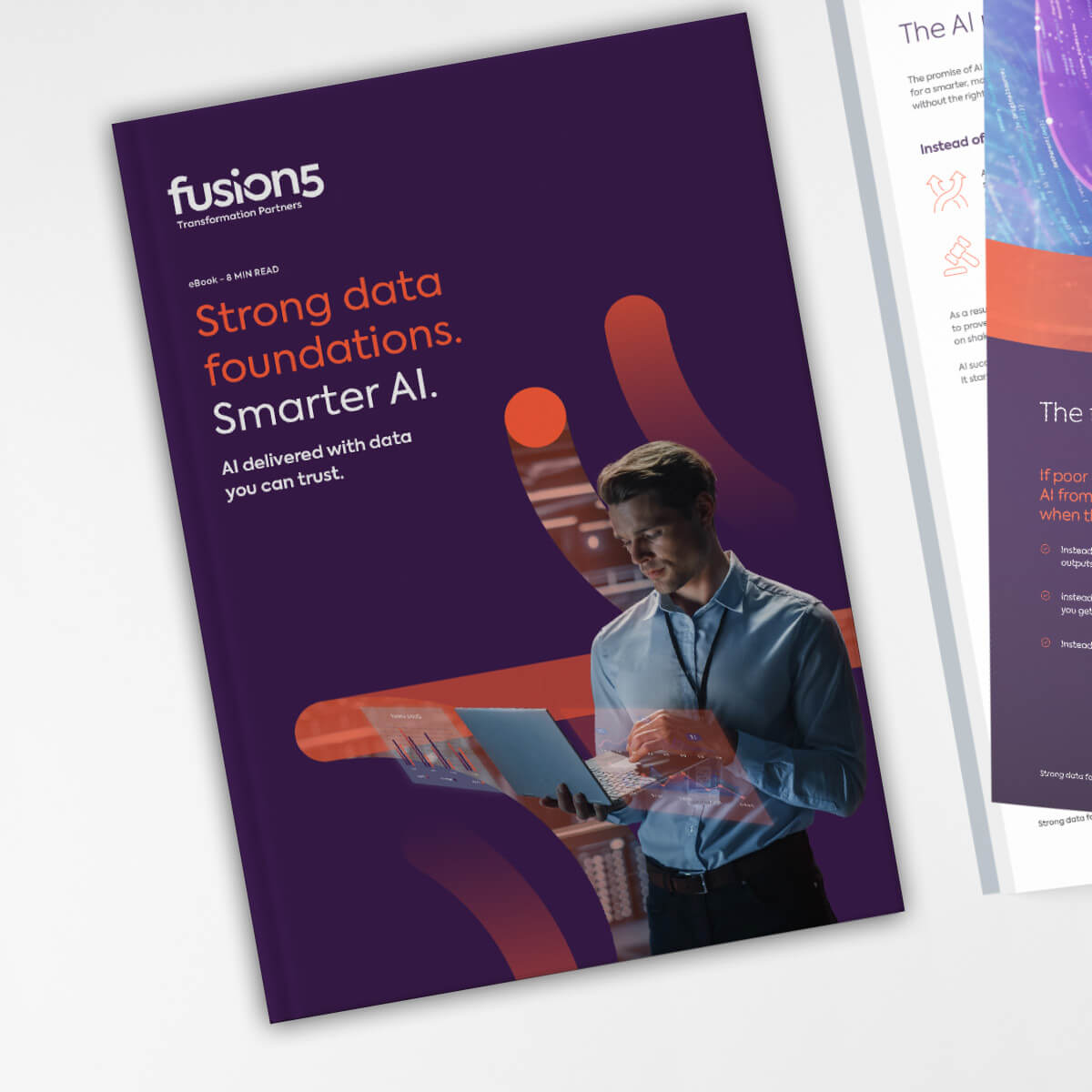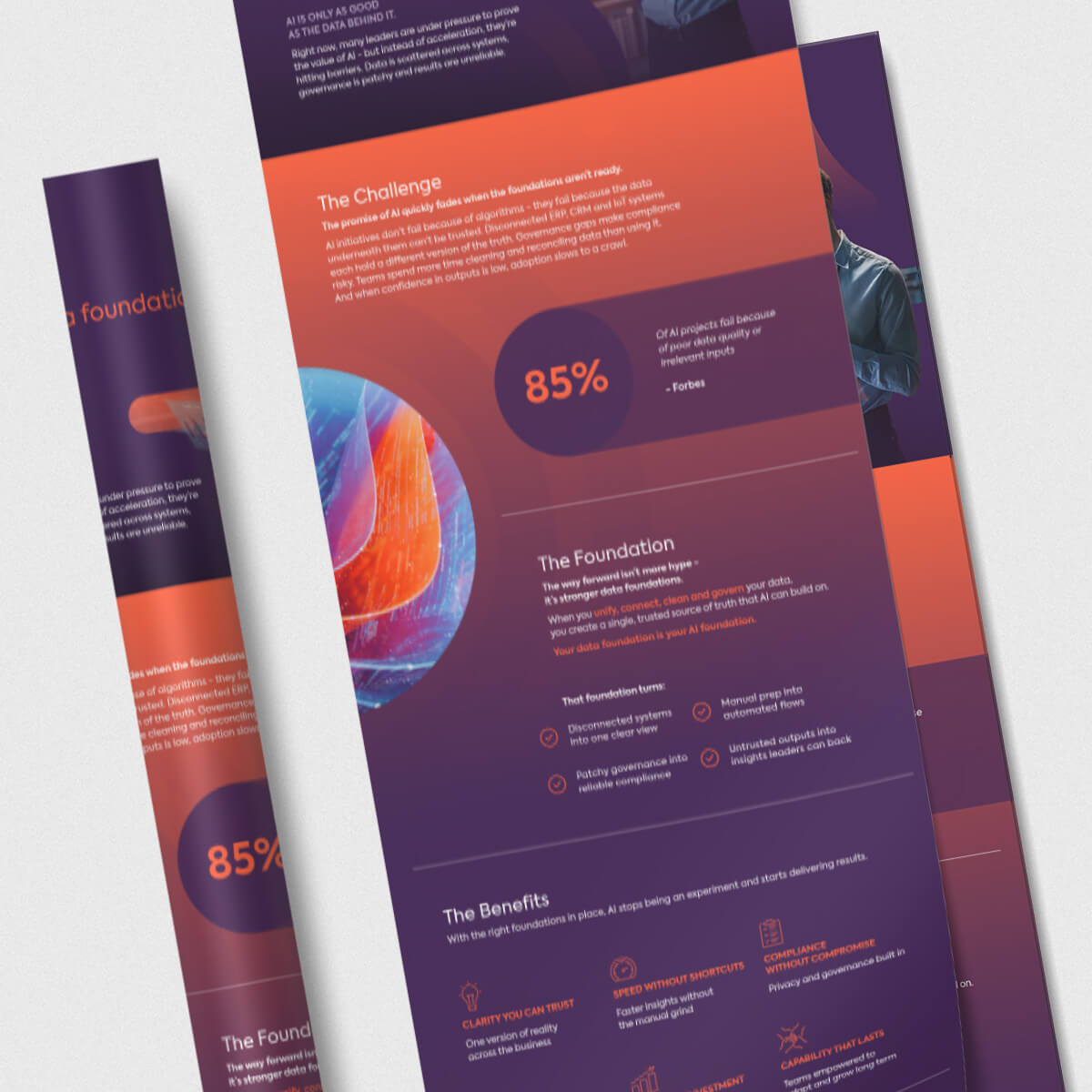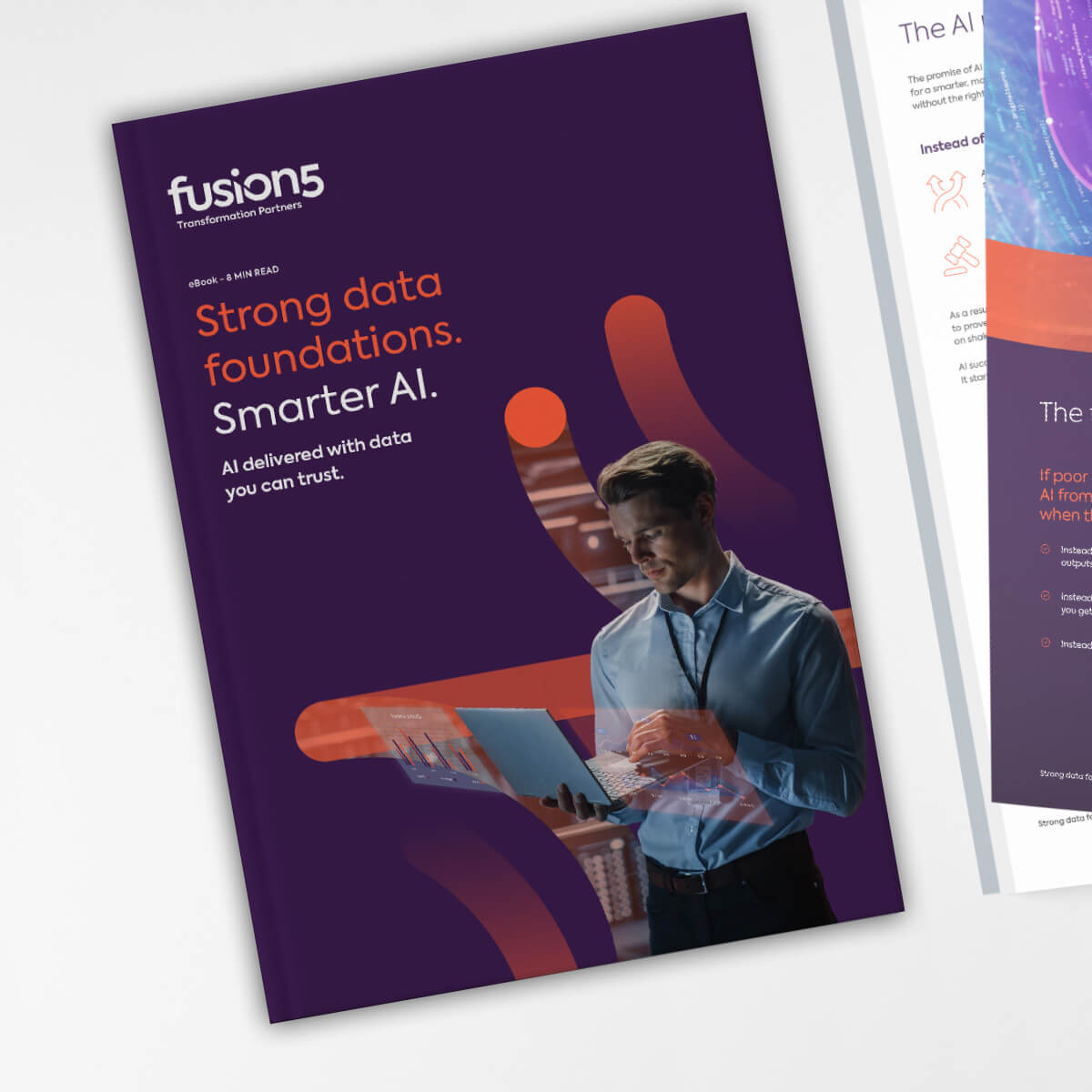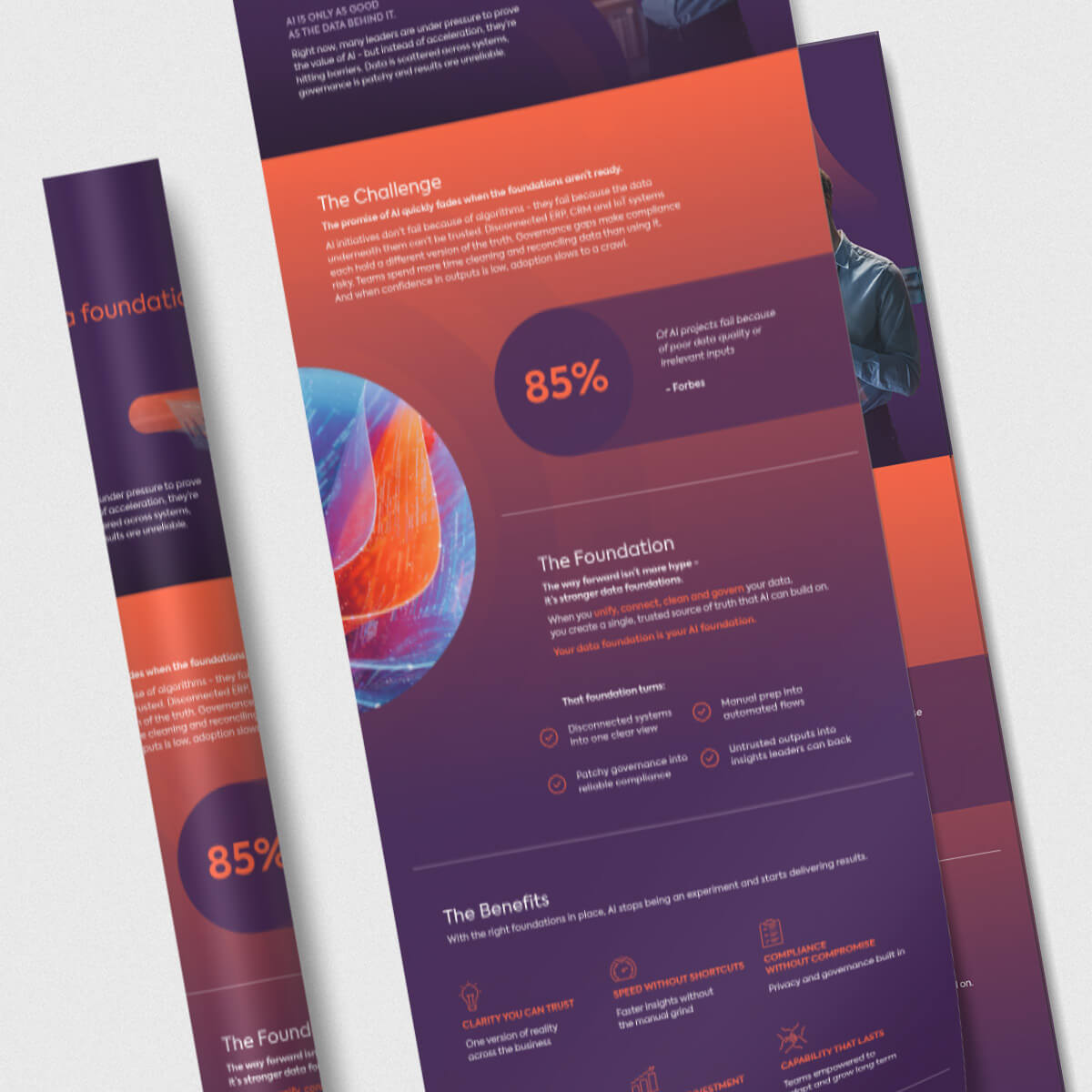A modern data platform is a cloud-based data architecture that combines the best of a data lake and data warehouse – often called a lakehouse. It brings together data governance, semantic models, and real-time data pipelines so your teams can trust analytics and scale AI confidently. At Fusion5, we design modern data platforms using Microsoft Fabric, Azure Synapse, Snowflake, and Databricks to match your business and data strategy.
Becoming data-driven isn’t optional – it’s existential.
We’ll take you from unsure to informed.
Few things will shape the next wave of market leaders more than the ability to capture, organise, secure, and use data effectively.
We design modern data platforms that integrate ERP, CRM, and third-party data, turning data into insights and delivering AI solutions leaders can trust.
Know your numbers. Trust your decisions.
We clean, govern, and connect your data so decisions are based on consistent, credible insights. No more second-guessing.
Less wrangling, more solving
We automate the repetitive stuff so your team can spend less time untangling data and more time on analysis and action.
Build internal capability that lasts
We don’t just deliver solutions. We help you use and evolve them, leaving teams stronger and more confident.
Ready for AI and what’s next
We build solid data foundations and help you apply AI to real business challenges, turning innovation into real impact.
You don't need to know it all - just where to begin
Let's find your best place to start.
We’ve moved away from a culture of fixed reports. Now the team can start with a question and go to the data to explore it. That’s a big shift.
Jonathan Gaynor | Executive Manager PMO, Ports North
How we work with partners
Data and analytics is never a solo act. It spans platforms, systems and skills, so collaboration is built into everything we do.
We build the right coalition of experts, clients, and partners – working across technologies like Microsoft Fabric, Power BI, Snowflake, and Databricks – to make progress achievable and outcomes stronger.
Partnership isn’t a logo list for us — it’s how we work.
Frequently asked questions
What is a modern data platform?
What is a data strategy and why does my business need one?
Think of a data strategy as your organisations game plan for using data to achieve its business goals. It’s about making sure your data is accurate, secure, and ready when you need it – so you can make smart decisions based on trusted data.
How do I know if my organisation is ready for advanced analytics or AI?
Start by asking: is our data reliable? Do we have the right technology in place? Are our leaders on board? A data maturity assessment can help you figure out your current capabilities and highlight any gaps.
Do we need master data management (MDM) for AI?
If you want AI-ready data, then master data management is important. MDM ensures that key entities such as customers, products, and suppliers are consistent across systems, reducing model errors and rework. It’s the difference between AI that’s experimental and AI that’s dependable. We help organisations implement MDM frameworks and governance that create the trusted, unified data foundation AI depends on.
Microsoft Fabric vs Databricks vs Snowflake – how do we choose?
Each platform has strengths: Microsoft Fabric delivers deep integration with Power BI and Azure; Databricks is ideal for large-scale data engineering and machine learning; Snowflake excels in performance and multi-cloud flexibility. At Fusion5, we assess your use cases, existing skills, and cost models to find the right mix. Many organisations use a hybrid approach – for example, Databricks for processing, Power BI for analytics, and Snowflake for warehousing, with Fabric providing governance.
What’s the difference between a data warehouse and a data lake?
A simple way to look at it is to imagine a data warehouse like a well-organised library, perfect for storing structured data in neat rows and columns, perfect for business reporting and analytics. On the other hand, a data lake is more like a digital reservoir, good for storing vast amounts of raw data in its native format, from spreadsheets to images and videos.
With clear goals and the right foundations, most organisations see measurable outcomes in 4–8 weeks. Typical early wins include clean semantic models for key reports, automated pipelines that replace manual spreadsheets, and a handful of dashboards that instantly improve visibility. These quick wins build momentum and confidence while setting the stage for larger data and AI initiatives.






















